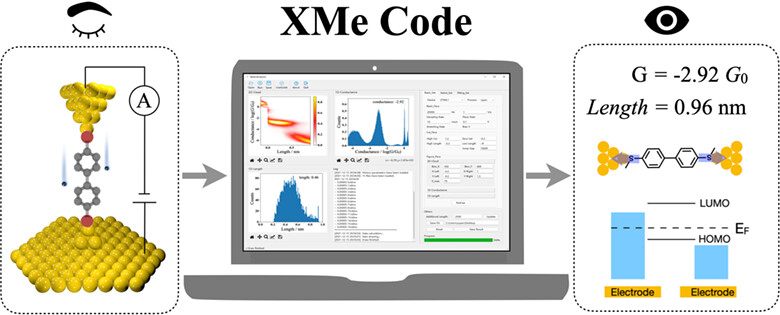Journal list menu
Export Citations
Download PDFs
Cover Picture
Cover Picture
- Page: 225
- First Published: 02 January 2024
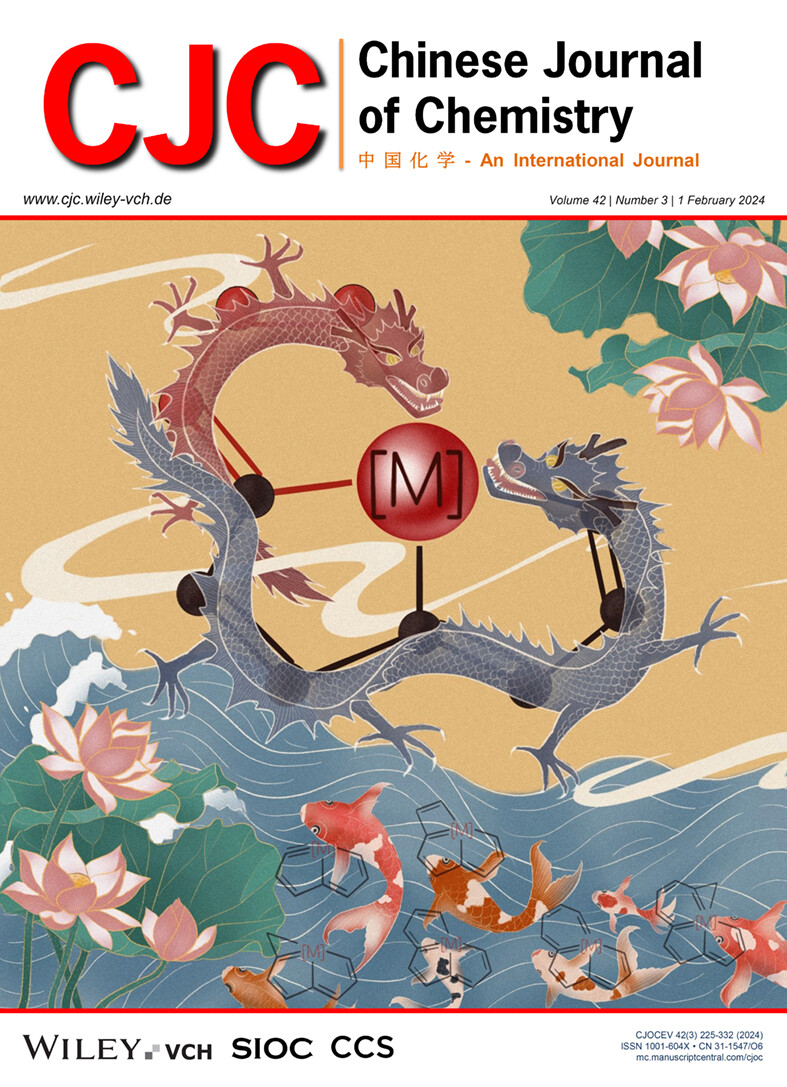
This cover picture shows a novel type of 10C-carbolong complexes constructed by a formal [7C+3C] method, from the reactions of a metallapentalyne with benzyl carbanions. The newly formed metallacyclopentadiene ring in the 10C-carbolong complexes was generated through a nucleophilic attack of carbanions to the M≡C bond followed by C–H activation. This work provides a new convenient route to construct metallacyclopentadienes and 10C-carbolong complexes. More details are discussed in the article by Xia et al. on page 235—242.
Inside Cover Picture
Inside Cover Picture
- Page: 226
- First Published: 02 January 2024
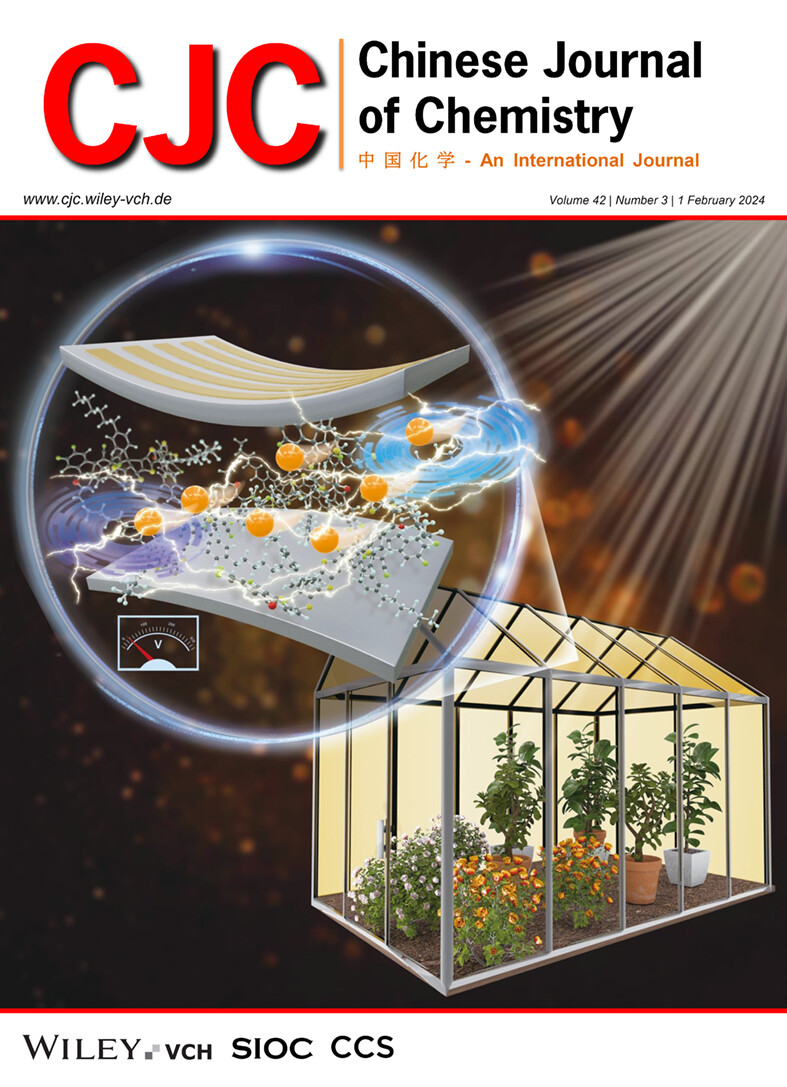
Organic photovoltaic (OPV) devices show promising as the next-generation renewable energy source. Currently, the non-radiative charge recombination induced energy loss is considered to be a major reason for the low device efficiency. This can be further attributed to the use of donor:acceptor (D:A) heterojunction structures, which resolves the high exciton binding energy induced low charge generation issue, but introduces low emissive charge transfer states. In this work, we assess the necessity of D:A heterojunction, and demonstrate that the high-performance D:A heterojunction-free OPV device is possible when both photo-induced spontaneous polaron generation and good ambipolar charge transport are realized. Moreover, the D:A heterojunction-free structure exhibits much less non-radiative charge recombination and more stable morphology for high performance, and probably becomes the next game-changer in OPVs. More details are discussed in the article by Zuo et al. on page 252—258.
Contents
Breaking Reports
Construction of a Metallacyclopentadiene Ring through the Attack of Carbanions to M≡C Bond Followed by C—H Activation
- Pages: 235-242
- First Published: 04 September 2023
Immunological Exploration of Helicobacter pylori Serotype O2 O-Antigen by Using a Synthetic Glycan Library
- Pages: 243-251
- First Published: 15 September 2023

Two oligosaccharides resembling part of the Helicobacter pylori (H. pylori) O2 O-antigen glycan are selected from a collection of synthetic oligosaccharides and are prepared glycoconjugates. Glycan microarrays demonstrate that glycoconjugates elicit robust IgG immune responses in rabbits. IgG antibodies induced against trisaccharide HPO2G-3a recognize the H. pylori O2 LPS and bacteria as a first step towards H. pylori vaccine development.
The Potential Game-Changer: A Concept-to-Proof Study on D:A Heterojunction-Free Organic Photovoltaics
- Pages: 252-258
- First Published: 07 September 2023
Concise Reports
Isocyanide-Based One-Pot Cascade Synthesis of 3-Acyl Isoindolinones
- Pages: 259-263
- First Published: 21 September 2023
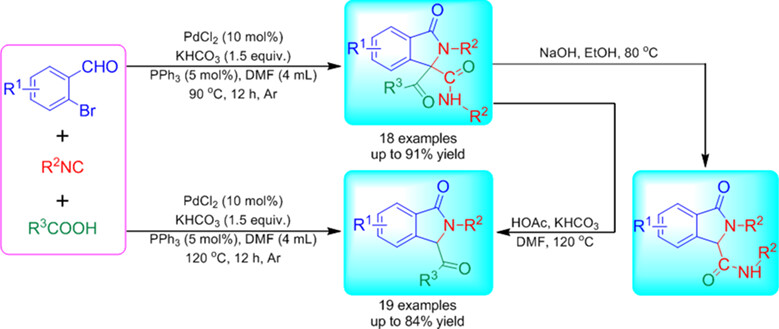
A series of 3-acyl-substituted isoindolinone derivatives could be readily prepared in one-pot manner by a palladium-catalyzed reaction of o-bromobenzaldehydes, isocyanides, with carboxylic acids. The reaction employing easily available starting materials features simple operation and high efficiency.
Metallaphotoredox-Catalyzed Three-Component Couplings for Practical Synthesis of Ureas and Carbamates
- Pages: 264-270
- First Published: 22 September 2023
Phosphine-Catalyzed [4+3] Annulation Reaction of Indole Derivatives with MBH Carbonates: A Facile Access to Indole-1,2-fused 1,4-Diazepinones and Azepines
- Pages: 271-275
- First Published: 28 September 2023
Selective N-Methylation of N-Methylaniline with CO2 and H2 over Cu/In2O3 Catalyst
- Pages: 276-282
- First Published: 26 September 2023
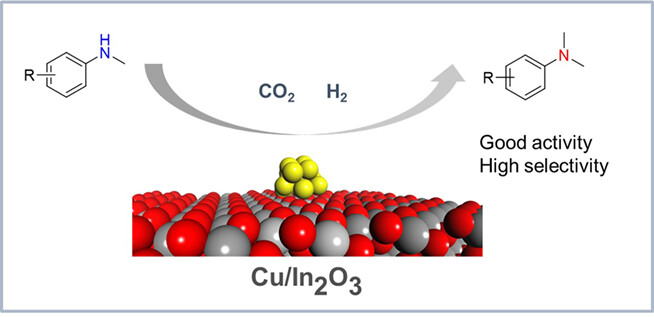
A non-noble metal catalyst of Cu/In2O3 for the heterogeneous N-methylation of MA with CO2 is effective. It is likely that CO2 reacts with H2 and MA to form intermediate MFA, and finally MFA is hydrogenated to DMA. And the loading of Cu on In2O3 improved the adsorption of intermediate MFA through C=O bond and inhibited the C—N bond cleavage side reactions. Under the optimum reaction conditions, the desired product of DMA was obtained in a high selectivity of 100% at 73.4% conversion.
Construction of Naphthalenediimide Lanthanide(III)-MOFs and Composites Incorporated Electron-Rich Pyrene Derivative as Multifunctional Fluorescence Sensing for Nitro Aromatic Compounds and Aldehydes
- Pages: 283-293
- First Published: 26 September 2023
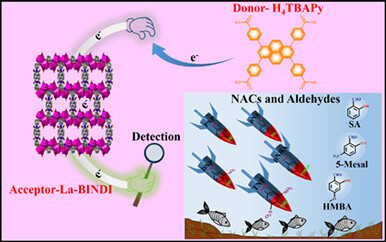
A series of 3D electron-deficient Ln-MOFs based on ligand H4BINDI have been designed and synthesized, which can serve as electron acceptor for the preparation of charge-transfer-based D-A type fluorescent composites by incorporated π-conjugated electron-rich H4TBAPy. La-BINDI@H4TBAPy possesses better selectivity and sensitivity for pNBA, PNP, pNA, DNP, and TNP of NACs and SA, 5-Mesal, and HMBA of aldehydes than complex 1.
Comprehensive Report
Palladium Complexes with N,O-Bidentate Ligands Based on N-Oxide Units from Cyclic Secondary Amines: Synthesis and Catalytic Application in Mizoroki-Heck Reaction
- Pages: 294-300
- First Published: 09 December 2023

The synthesis of four palladium complexes with N,O-bidentate ligands based on N-oxide units from cyclic secondary amines and their catalytic application in Mizoroki-Heck reaction of aryl bromides with electron-deficient olefins were reported. This work provides an efficient and new method for construction of Csp2-Csp2 bonds in the synthesis of functional organic molecules and pharmaceuticals.
Recent Advances
Covalent Triazine Framework Nanosheets: Synthesis and Energy Conversion and Storage
- Pages: 301-316
- First Published: 14 September 2023

The forefront developments and applications of CTF nanosheets as photocatalysts and electrochemical electrodes have conferred superior performance and made great impact in the field of energy and advanced catalysis. This review provides an overview of the research trends, synthesis of CTFs as well as their nanosheets, and highlights advances in the direction of energy storage and conversion.
Critical Review
XMe - Xiamen Molecular Electronics Code: An Intelligent and Open-Source Data Analysis Tool for Single-Molecule Conductance Measurements
- Pages: 317-329
- First Published: 22 September 2023
Inside Back Cover
Inside Back Cover
- Page: 331
- First Published: 02 January 2024
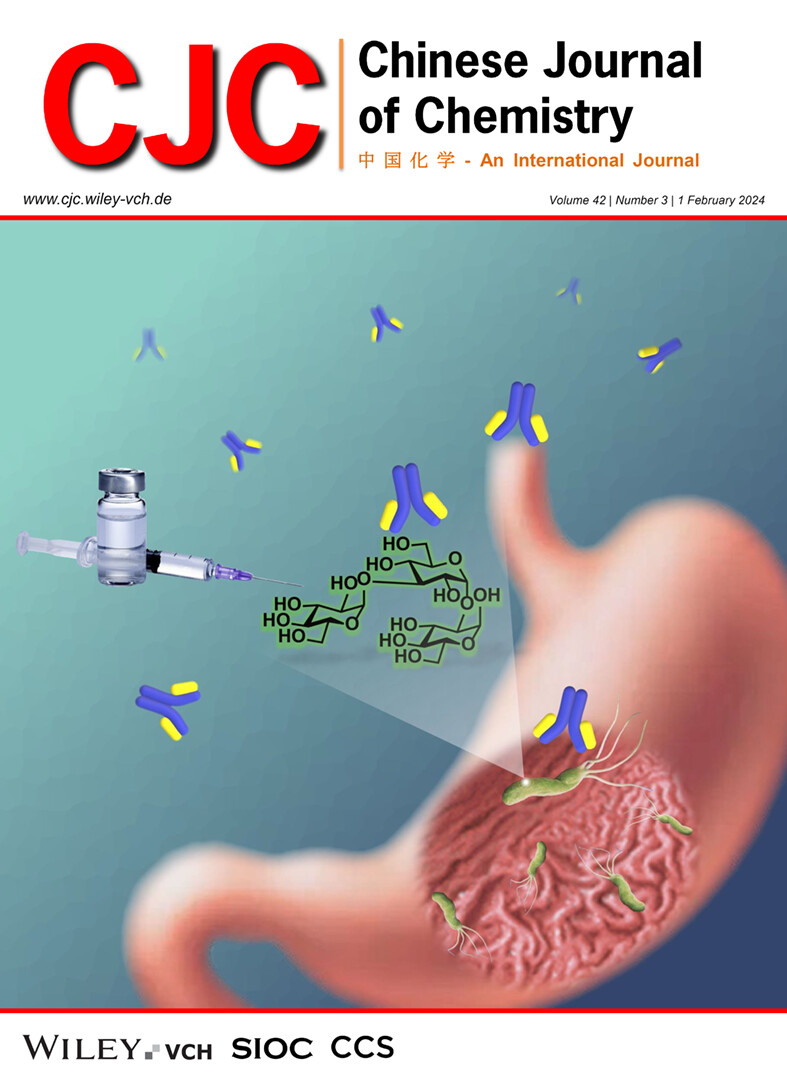
The glycoconjugate of Helicobacter pylori serotype O2 O-antigen fragment HPO2G-3a-CRM197 can elicit a robust IgG immune response in rabbits, which possesses a strong binding affinity with LPS and bacteria of H. pylori O2. The trisaccharide HPO2G-3a is a promising candidate for H. pylori vaccine development. More details are discussed in the article by Yin et al. on page 243—251.
Back Cover
Back Cover
- Page: 332
- First Published: 02 January 2024
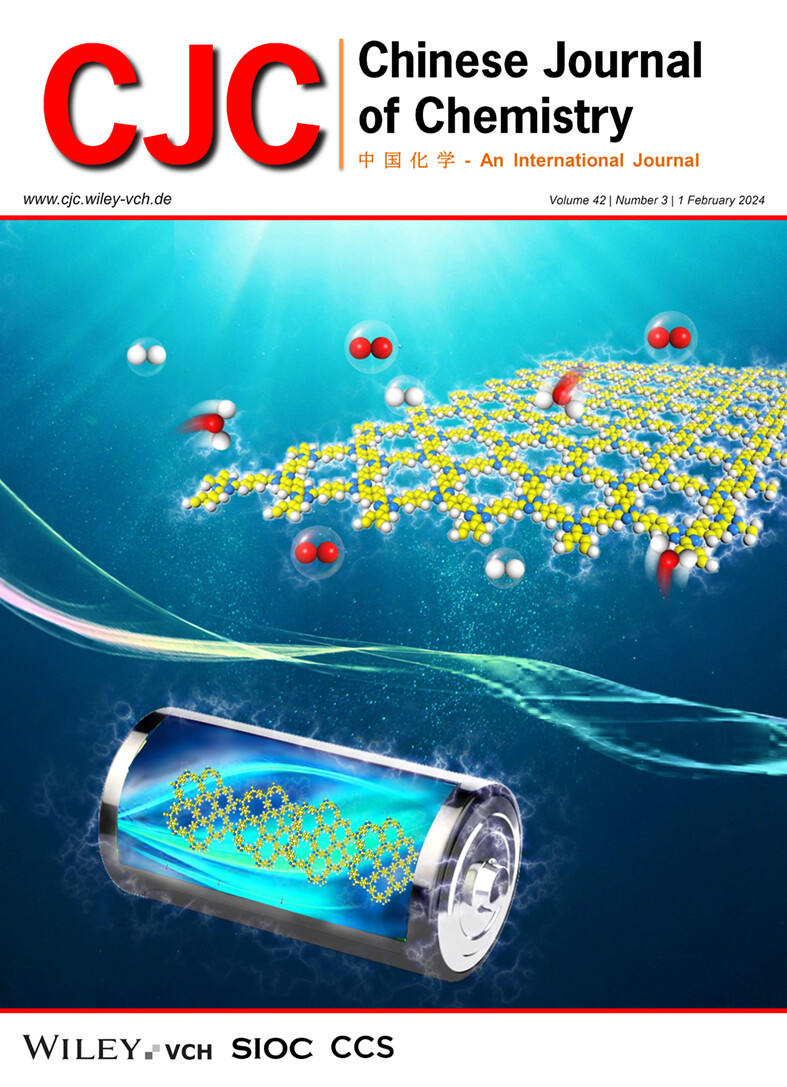
Covalent triazine framework nanosheets (CTF NSs), an emerging class of two-dimensional polymeric nanomaterials, have received great attention due to their abundant active sites, permanent periodic porosity, molecular structural diversity, superior chemical and thermal stability, and short charge diffusion path, thus demonstrating great potential in energy storage and conversion. More details are discussed in the review article by Xu et al. on page 301—316.




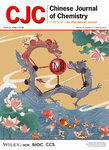
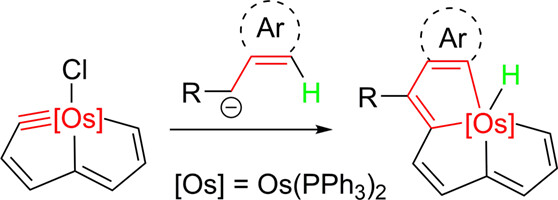
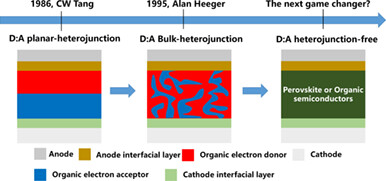

![Phosphine-Catalyzed [4+3] Annulation Reaction of Indole Derivatives with MBH Carbonates: A Facile Access to Indole-1,2-fused 1,4-Diazepinones and Azepines](/cms/asset/c5dac69d-615f-43f6-86c5-c17b63191735/cjoc202300505-toc-0001-m.jpg)
